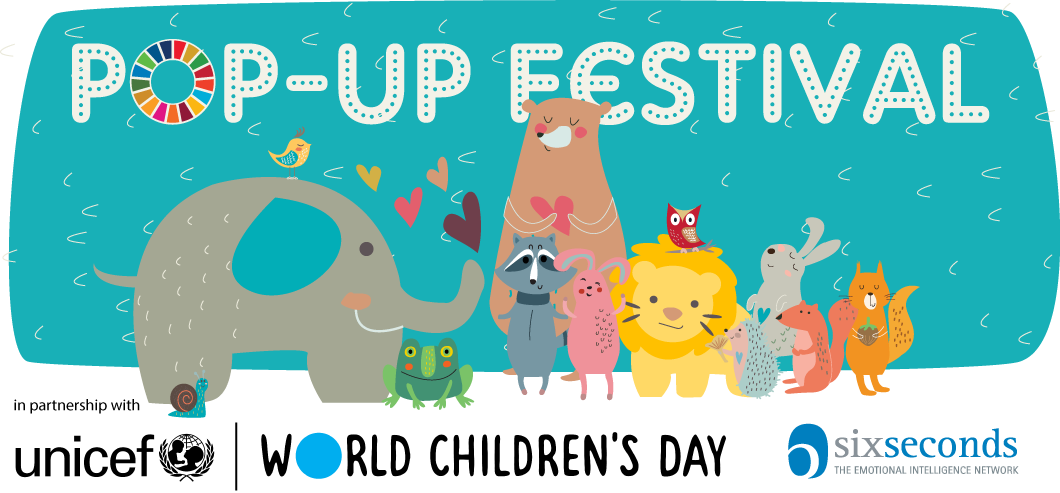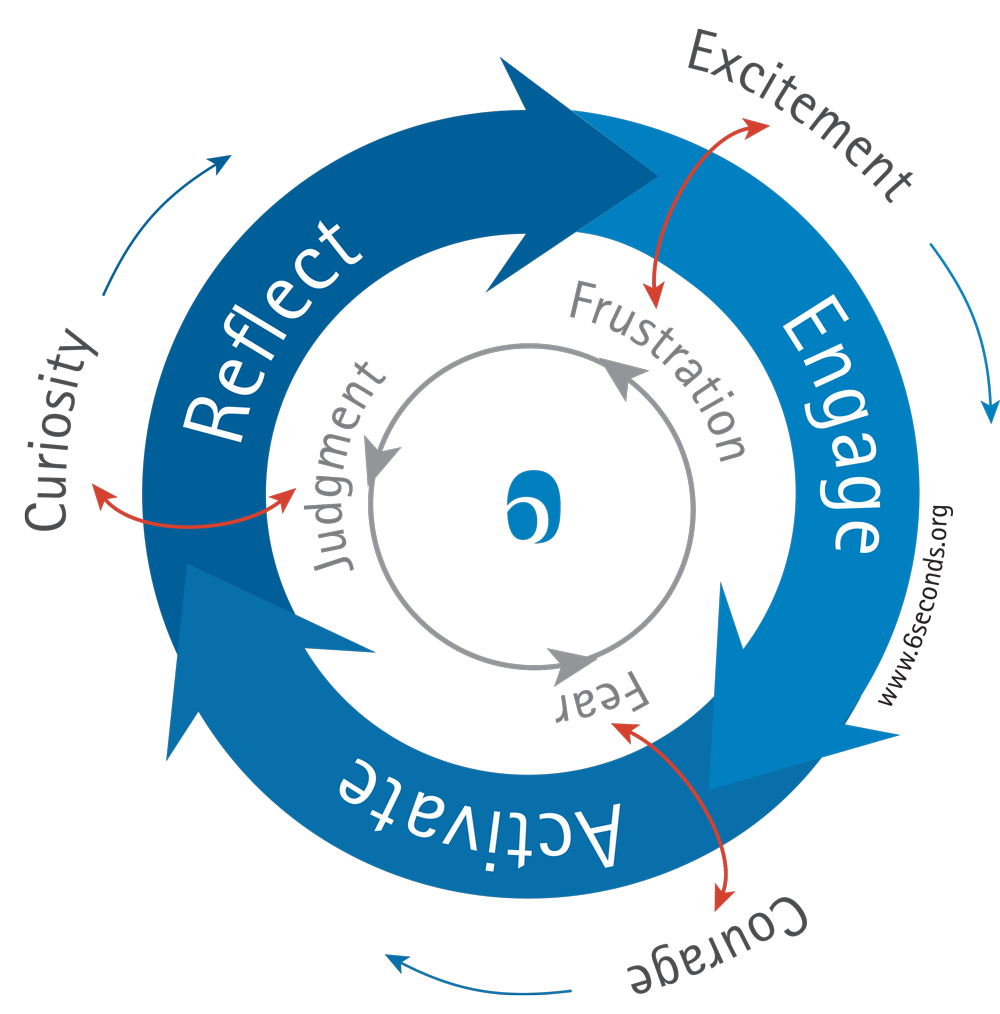How Do You Want Your Students to Feel in 2023?
A 3-Step Process to Engage Students with Emotional Intelligence
In the way-back-machine, I studied acting, and learned that an audience felt an actor’s intention — even without words. The script might say, “I don’t want any cookies,” but the director might tell you, “actually you want the cookies a lot.. your intention is to get them!” When an actor has that intention, even though it’s hidden inside, the audience can tell.
Sometime later, as a teacher, I found much the same:
When I was clear on my intention, students understood better. And when I had a clear intention about how I wanted students to feel, they learned better.
This makes sense because emotions play a critical role in learning. As educators, one of the most important questions we can ask ourselves is, “How do I want my students to feel?” And the equally important follow up: “How can I make that happen?”
Here’s a 3-step guide to utilize emotions to facilitate learning, based on the latest research in emotional intelligence and social neuroscience.

Join the world’s largest emotional intelligence celebration!
- FREE lessons and resources for all ages
- Mentoring & training support for free
- Decorations included for your home or classroom
Which Emotions Support Learning?
Research shows emotion improves learning. But which emotions, when? Here is a map, both literally and figuratively.
In the Six Seconds learning philosophy, we identify learning as a process of change, and so we use the Change MAP as a framework to design learning as a transformational process. While I’ve written before about that structure, I didn’t highlight the all-important red lines. They show the emotional transition required to build the energy needed to move forward in that phase. Without that emotional engagement, the change process stalls. The same is true for learning.

How to Start: Engaging Excitement
In the ENGAGE phase, at the start of a lesson or module, we have practical goals: Orient the learners. Activate prior knowledge. Wake up their brains and prepare them for forming new neural connections.
Of course, cognition isn’t enough. We need them to feel engaged too! You can see the red arrow in this phase goes from frustration toward excitement. If they start deep in the abyss of frustration, they’re not suddenly going to be bouncing on the edge of their seats . . . . so we need to move a little way toward excitement. Toward passion, joy, fun, wonder, and a sense of possibility.
As educators, we can facilitate that shift by engaging our own emotions. What about this topic is wonderful? What’s the question or possibility that excites us? And, of course, it’s not about us . . . we need to find what, in this topic, is exciting for our learners. If we can’t find that, we will fail to engage them.
At the Heart of Learning: From Fear to Courage
In the ACTIVATE phase our practical goal is to bring the learning to life. To make it real – to put it into action. This is the meat of a lesson, where learners have a new experience, try something, practice, and have an Aha! moment.
The emotional goal is to move from fear toward courage. Again, it’s not a “flip the switch” situation. If someone is awkward, uncomfortable, resistant, overwhelmed . . . they won’t instantly be jumping into the unknown with a cheer. However, if we remember that our emotional intention in this phase is to fuel courage, they will respond. And, again, fear isn’t bad. It’s a powerful protector — so it slows down change.
As educators, we also need courage here. Courage to ask a deeper question. To challenge our own and our learners’ assumptions. To be the “rock in the river” unmoved by their fear or reactivity. Courage is about heart, and it grows from knowing that this moment matters. That despite the risks, it’s worth standing up.
One of the most simply powerful ways for us to encourage courage is by building safety. If we respectfully demand a safe environment, we need to respectfully intervene even in small discouragements (such as a titter of shame-inducing giggles when a student tries and fails), Notice the roots of the words encourage and discourage? This is a simple, powerful case where emotion improves learning.
The Moment of Meaning: Synthesis and Reflection
The Six Seconds’ methodology is grounded in a learning theory called constructivism. In this approach, the goal of learning is not “acquiring knowledge,” but a more complex and challenging achievement: The creation of meaning.
The REFLECT phase is where this happens. We look back to mine what we’ve learned — to analyze and synthesize. Then we need learners to look ahead with what may be the most important question of every learning environment: How will you apply this new insight?
The red line here is from judgment to curiosity. Judgment isn’t innately “bad.” Our brains our wired to judge . . . to discern . . . to rank . . . but once we are certain, there’s no more need to learn. So we need to actively, consciously, carefully re-open the case and consider: Is there more to the story?
Curiosity is about openness. It’s a process of seeking connection, of viewing multiple perspectives, of listening to ourselves and one another. In this phase, as educators we urgently need our own curiosity. If we’re asking questions to which we already know the answer, our students will know that there’s no need for an open mind. Ask questions where you genuinely want to hear new answers. Be surprised by alternate viewpoints. Delight in discovery.

Join the world’s largest emotional intelligence celebration!
- FREE lessons and resources for all ages
- Decorations included for your home or classroom
You may also like…
- Emotions As a Motivation Supercharger: 3 Essential Questions to Feel Motivated - July 7, 2025
- The Motivation Iceberg: 3 Tips to Unleash Motivation - June 28, 2025
- How to Control Emotions Without Shutting Them Down: A 3-Step Process That Actually Works, and the Neuroscience Behind the Technique - June 15, 2025

Great article!
As a teacher, I try to eliminate all conditions which built fear in my language learners by mostly encouraging them. However, most judgements comes from the other learners. How can I treat those learners who judge so that they wouldnt be discouraged.
I have a fearful learner in one side and judgmental learners on the other; and both sides need to be treated thoughfully.
Hi great ideas and as a teacher with training in EI appreciate the ideas and focus presented here. I also teach in the on line space and this EI stuff is even more important but difficult to achieve as successfully as in the classroom. I’m in tertiary teaching and many students don’t want to engage and then complain when their assessments and learning are thin and incomplete.Whats your take on this please?
I love how the connections between ESL/EQ and Lesson Design become so apparent the more I learn.